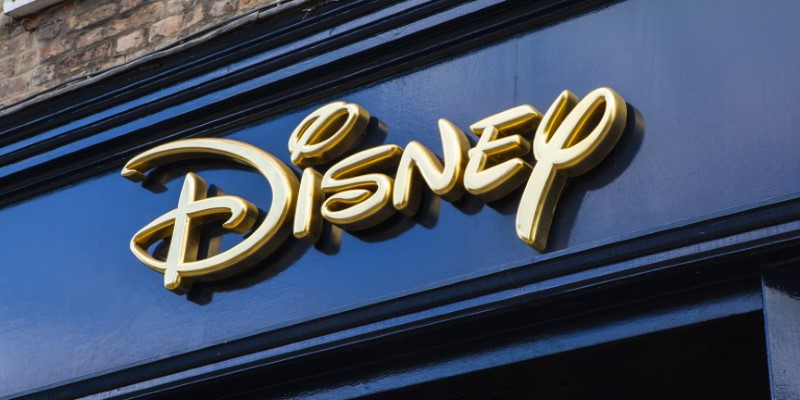How to Buy Disney Stock (DIS): A Step-by-Step Guide for Investors
Disney has long been one of the most iconic companies in the world, captivating millions with its movies, theme parks, and other entertainment ventures. For investors, owning a Disney piece can be an exciting way to participate in the continued success of the brand. If you're looking to buy Disney stock (DIS), it's important to understand the steps involved, as well as some of the key factors to consider. This article will guide you through everything you need to know to start your journey of purchasing Disney shares.

Why Invest in Disney Stock?
It would be helpful to understand why buying Disney stock could be a good idea for your portfolio before jumping into the process of purchasing it. Disney is a diversified company with a long history and various sources of income through movies, television channels, Disney+, theme parks, and merchandise. Despite all these challenges, Disney is proving to be a very resilient company with great growth potential, especially as it has survived and continued to thrive despite significant impacts on theme park revenues. Disney continues to innovate and expand its digital footprint and brand presence.
Investors may be attracted to Disney because of its long-term growth prospects, solid revenue generation track record, and adaptability in a changing media landscape. In addition, the stock often pays dividends, which is attractive for income-generating investors as well as those seeking capital appreciation.
The Basics of Buying Disney Stock
Step 1: Choose a Brokerage Account

The first step in buying any stock, including Disney (DIS), is opening a brokerage account. A brokerage acts as an intermediary between you and the stock market, enabling you to buy and sell shares. There are various types of brokerage platforms available, ranging from traditional firms to newer, tech-driven apps. Some popular options include Fidelity, Charles Schwab, TD Ameritrade, E*TRADE, and Robinhood, which offers commission-free trading.
Each of these brokers has its own advantages and features, so it's important to select one that aligns with your investment goals. Many platforms also offer educational tools and research materials to help you learn more about investing in Disney and other companies. When choosing a broker, consider factors like fees, account minimums, and the research tools they provide. You’ll also want to ensure the broker allows you to trade Disney stock, though most reputable brokers will offer this option.
Step 2: Fund Your Account
After selecting a brokerage and setting up your account, the next step is to fund it. This process involves moving funds from your bank account to your brokerage account. Most brokers enable you to link a checking or savings account for convenient transfers.
It's important to fund your account with the amount of money you're comfortable with investing in Disney stock. You don't need to buy a full share if you don't have the budget for it—many brokers allow fractional shares, meaning you can buy a portion of a Disney share rather than a whole one. This can be especially helpful for those just starting with a limited budget.
Step 3: Research Disney Stock

Before you place an order, it’s crucial to do your homework. Researching Disney’s financial health, future prospects, and industry trends will help you make a well-informed decision. Look at the company’s earnings reports, revenue growth, debt levels, and competitive positioning within the entertainment industry.
Focus on essential metrics such as earnings per share (EPS), the price-to-earnings ratio (P/E), and dividend yield. These numbers give you insight into how well Disney is performing financially and whether its stock is undervalued or overvalued compared to other companies in the same industry.
Step 4: Place Your Order
Once you’ve done your research and feel confident in your decision, it’s time to place an order. There are two main types of orders you can use to buy Disney stock:
Market Order: A market order buys the stock at the current market price. This is the most common type of order and ensures your purchase is executed quickly.
Limit Order: A limit order allows you to specify the maximum price you’re willing to pay for a share of Disney. If the stock reaches your specified price, the order will be executed. If it doesn’t, your order will remain unfulfilled.
Step 5: Monitor Your Investment
After purchasing Disney stock, it’s important to monitor your investment over time. Keep an eye on Disney’s quarterly earnings reports, updates on Disney+, and any changes in its media or theme park operations. By staying informed, you can adjust your investment strategy as needed.
You may also want to set up alerts through your brokerage account to track significant movements in Disney’s stock price. If the stock price falls to a level you’re comfortable with, you can buy more shares. Alternatively, if the stock price rises significantly, you might want to consider selling some of your shares to lock in profits.
Key Factors to Consider Before Buying Disney Stock
Economic Conditions: Like all companies, Disney is affected by the broader economy. Changes in consumer spending, inflation, or economic downturns could impact the company’s performance, especially in areas like theme parks and merchandise.
Competition in the Streaming Market: Disney+ has become a significant player in the streaming wars, but it faces fierce competition from other major players like Netflix and Amazon. Monitoring Disney’s subscriber growth and how it competes in the digital media landscape is essential.
Impact of Global Events: Events like global pandemics can have a substantial impact on Disney’s business. The company’s theme parks and cruise lines were heavily impacted by lockdowns, but they’ve shown resilience in recovery. Stay updated on any events that could affect Disney’s operations.
Conclusion
Buying Disney stock (DIS) can be a rewarding experience for investors who are looking to own a piece of one of the most iconic companies in the world. By following the steps outlined in this article, you can take the first steps toward investing in Disney, whether you’re new to the stock market or a seasoned investor. Remember to choose the right brokerage, research the company thoroughly, and stay informed about Disney’s performance over time. With a clear understanding of the process and careful planning, you can confidently add Disney stock to your investment portfolio.












